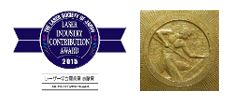Speckle Contrast Measurement System products list
Accelerated use of lasers in projection displays in the market.
Development of projection displays using lasers for all 3 primary colors (Red, Green and Blue) has been accelerated. The biggest advantage of using 3 lasers is to realize superior color rendering. Lasers also allow longer lifetime and lower power consumption as well. Whereas, lasers may be prone to speckle noise that may degrade image quality in displays. To meet the industrial requirements to tackle with this issue we introduced speckle contrast evaluation equipment into market in 2011, whose methods became compliant with the international standard IEC 62906-5-2: Optical measuring methods of speckle contrast, issued in 2016. Now this equipment is recognized as the de facto standard of speckle evaluation in the display industry.
(New Technology) Color speckle measurement software has become available!
New evaluation method of color speckle has been authorized as the international standard IEC 62906-5-4: Optical measuring methods of colour speckle, issued in 2016. This measurement method maps speckle noise of white pixels as the distributed points on the chromaticity diagram. We have introduced Color speckle measurement software to match the industrial needs.
Speckle noise evaluation tools for developers of next generation laser displays .
Speckle noise evaluation is the first step to reduce speckle noise in laser displays. Dr. SPECKLE series, as the best speckle contrast evaluation tools, enable accurate evaluation of speckle noises formed on the retina of human eyes.
Features
- Compliant with the international standard IEC 62906-5-2 (Optical measuring methods of speckle contrast) and IEC 62906-5-4 (Optical measuring method of colour speckle).
- TSimulates the point spread function of the human eyes with CCD camera.
- Speckle noise is evaluated by quantitative measurement index of speckle contrast.
- The system is equipped with a dedicated software (M-Speckle) developed in-house.
- High repeatability and dynamic range (Cs=0.01~1.00), thanks to a cooled CCD camera and an original algorithm.
- Two types of non-uniform background luminance distribution correctable.
- The speckle average grain size calculable.
- Portable size and weight.
Examples of evaluating samples
- Laser displays:
Large venue projectors for cinema theaters, Laser TVs, Pico-projectors, Laser-based head-up displays - Optical components of Laser display:
Laser sources, Spatial light modulators (SLMs), Projection screens, Speckle diffusers etc. - Laser headlights, Laser lighting, etc.
Awards
- 7th Laser Industry Contribution Award by the Laser Society of Japan in April, 2015.
- The Director-General’s Prize of 13th New JSPMI Prize by the Japan Society for the Promotion of Machine Industry in February, 2016.
drspeckle_type3_english-catalog.pdf




